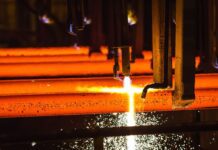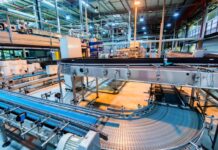
The Gateway to Industry Schools Program, run by the Queensland Manufacturing Institute (QMI), recently hosted an inspiring webinar, “Exploring Career Pathways in Biofabrication and Bioengineering,” aimed at students and educators interested in manufacturing careers.
The session featured insights from experts at the Herston Biofabrication Institute (HBI), spotlighting advances in healthcare through biofabrication.
It highlighted innovative 3D printing techniques and other advanced manufacturing processes, which are currently used to produce customised anatomical models and biomaterials for tissue engineering.
A prominent theme of the webinar was the critical role of transferable skills in biofabrication and bioengineering.
Panelists stressed that successful professionals in the field often excel in problem-solving, critical thinking, adaptability, and communication, regardless of their academic or technical background.
Another focus was the rising demand for skilled professionals as the field expands.
Industry experts shared insights into various educational pathways, from undergraduate and graduate programs to apprenticeships and internships, encouraging students to consider these routes to enter an industry with growing career prospects.
The event spotlighted the practical applications of biofabrication technology, including how it is redefining healthcare and medical training:
- Personalised Medicine: 3D printing allows the creation of patient-specific anatomical models, enabling doctors to plan surgeries with precision tailored to individual patients.
- Advanced Manufacturing Techniques: Cutting-edge 3D printing technology, such as the Stratasys J750 material jetting printer, showcased how high-resolution anatomical models can be manufactured with accuracy and detail.
- Industrial Design Integration: Collaboration between bioengineers and industrial designers ensures biofabricated products are both functional and aesthetically suitable for medical applications.
- Surgical Training Innovation: The development of models like the External Ventricular Brain Trainer provides realistic training tools, enhancing the skills of medical professionals.
- Material Science Advancements: Researchers are continually exploring new biocompatible materials to improve the safety and functionality of biofabricated products.
Presenters introduced participants to a range of potential career paths within biofabrication and bioengineering, appealing to individuals with various skills and interests. Popular roles in the field include:
- Biomedical Engineers: Professionals who design and develop medical devices and 3D-printed implants.
- Biomaterials Scientists: Researchers focused on discovering new materials suitable for biofabrication, with emphasis on biocompatibility and durability.
- Industrial Designers: Experts who collaborate with scientists to create functional and visually appealing biofabricated products.
- Surgical Technicians: Skilled professionals assisting with procedures involving biofabricated components.
- Research Scientists: Innovators advancing the field through new applications and bioengineering techniques.
- Regulatory Affairs Specialists: Professionals ensuring biofabricated products comply with industry standards.
- Entrepreneurs: Visionaries establishing businesses to commercialise biofabrication technologies.
Participant feedback highlighted the webinar’s practical focus, especially on transferable skills.
“Sometimes when you talk to students about these higher-end qualifications, it is hard for them to relate and see themselves entering into particular areas because they feel they have not done what they think is needed to get there. This showed them that skills are very transferable. Well done,” said a St. Mary’s College Maryborough attendee.



















